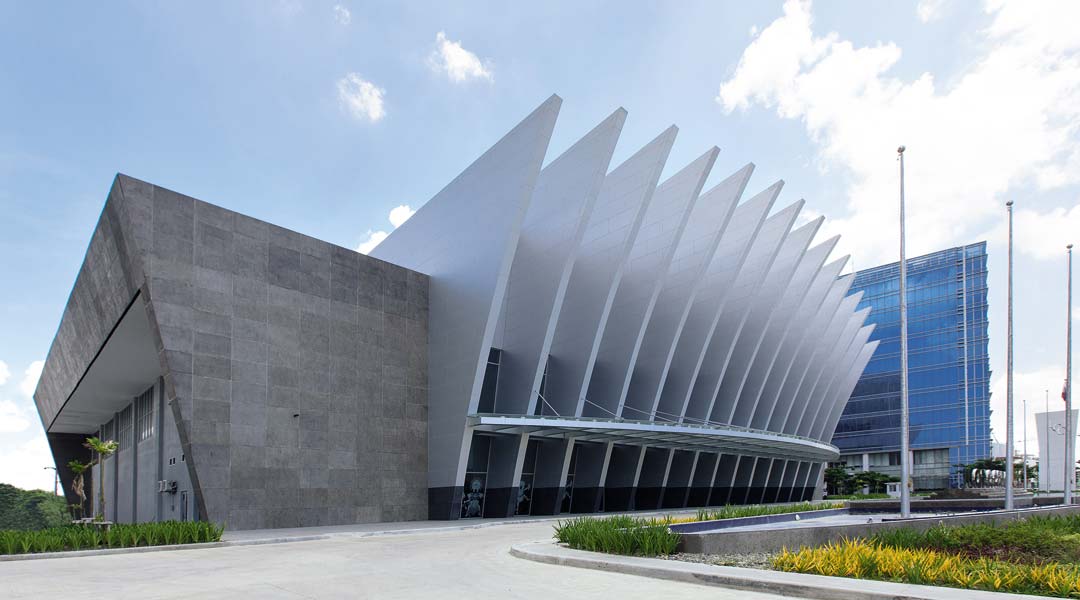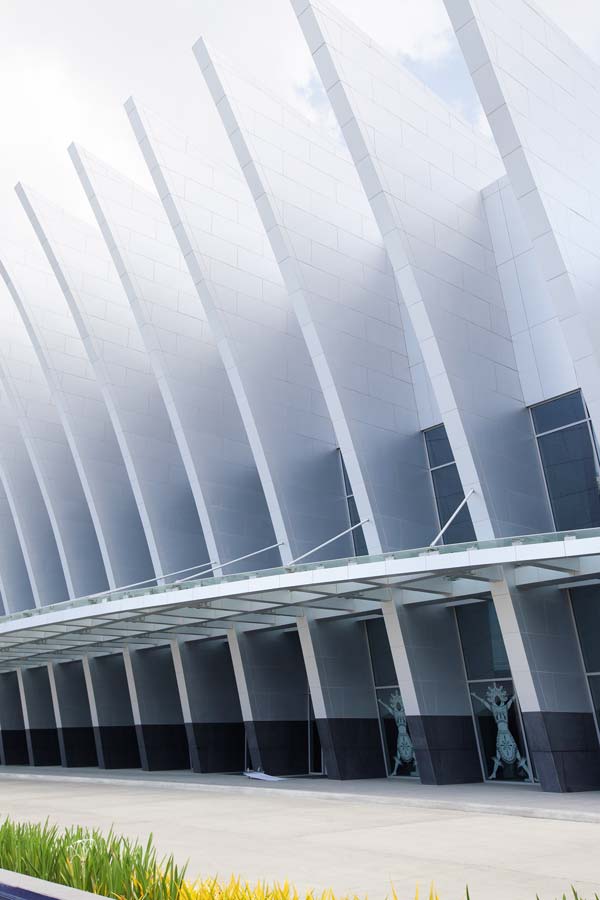
Revitalizing Downtown Iloilo: The Push for City-wide Initiatives
If you’ve visited Iloilo lately, you would have noticed the many new improvements throughout the city, such as the beautifully landscaped main road leading to the city center, the impressive Iloilo Convention Center, the Iloilo River Esplanade, and the newly restored heritage buildings in the downtown area. Iloilo City has emerged as one of the most progressive, livable and competitive cities not only in the Philippines but also in the Asia-Pacific region.

Back in 2008, my firm, CONCEP, had the privilege of being engaged by then Iloilo City Mayor (now Congressman) Jerry Treñas to formulate a plan for the redevelopment and revitalization of downtown Iloilo. The mayor felt the downtown area was deteriorating because its businesses were under severe competition from the newer shopping malls, which were attracting more shoppers. He wanted this deterioration stopped and to revitalize the local businesses so they could provide jobs and livelihood in the downtown area. This gave me the rare opportunity and privilege to work with him and Vice Mayor (now Mayor) Jed Mabilog, and the city’s talented and dynamic planning team headed by Butz Peñalosa. Our objective was to produce a “roadmap” that would guide the improvement of the downtown’s physical, social, economic, and environmental conditions so that it would retain and strengthen its role as the city’s premier commercial center. At the same time, we needed to take into consideration the many historical buildings in the downtown area, which the city considered as important heritage assets that should be conserved.
After a series of consultations and meetings with the city’s key stakeholders, such as the private building owners, business operators, merchants associations, the local chamber of commerce and industry, civic organizations, and the concerned government agencies, we came up with a proposed downtown redevelopment plan with a 20-year timeframe.
This plan included:
- The conservation and retrofitting of the heritage buildings that had been identified earlier by the Iloilo City Cultural Heritage Conservation Council;
- The physical and infrastructure improvement of the public realm—streets and sidewalks—including parking and the relocation of sidewalk vendors;
- The pedestrianization and conversion of a block of Calle Réal into a “walking street”;
- The financing and institutional arrangement for the implementation of the revitalization activities as well as the subsequent management of the area.
[full_width padding=”0 0 40px 0″]

Initially, we could not get all of the city’s stakeholders to agree with all of the components of the plan. For example, some of them perceived that the pedestrianization of Calle Réal would negatively affect the local business and also aggravate the traffic situation. Others raised concerns about the capability of building owners to restore and retrofit their buildings without government assistance, while the sidewalk vendors vehemently objected to being relocated.
Read more: Iloilo’s Calle Réal shows Escolta how heritage CBD restoration is done
To address these valid concerns, we proposed an Action Plan comprising a set of pilot and “demonstration” projects that could be implemented quickly. One was to establish a once-a-week “street market” (or tiangge) on Aldeguer Street that would operate for a specified time period, with the aim of demonstrating in concrete but temporary terms the benefits of pedestrianization, which include that of serving as the alternative site for the affected sidewalk vendors. Another was the heritage conservation-oriented redevelopment of the Central Market to demonstrate the viability of integrating heritage conservation and the improvement of the market through a public-private partnership approach.
This project also aimed to pilot the necessary improvements of the streets and sidewalks, including drainage and the provision of properly designed and managed parking spaces. After further discussions, the plan was approved. It has been eight years since we submitted this plan, and many things have happened since then, including changes in the membership of the city’s legislative body, the Sangguniang Panglungsod. In the process, certain revisions have been made to the original plan in response to new opportunities have that come up. We now also find that a number of the actions we originally recommended have been implemented, some are on-going although modified, while others have been replaced by new ideas.
Instead of the proposed street market in Aldeguer Street, the city government, through the efforts of Councilor Jason Gonzales, has embarked on the pedestrianization of a portion of Calle Réal on weekends. With food kiosks and street dance demonstrations, this program is supported by the city’s tourism and engineering departments, as well as the local chamber of commerce and industry. The city’s engineering department has also improved the sidewalks including the installation of new street lamps, arcade lights, and conversion to LED bulbs. Commercial signs along the building arcades on Calle Réal have also been downsized in accordance with heritage conservation design guidelines. In the entire heritage zone, new billboards are no longer allowed while existing ones are gradually being phased out.
As we walk down the streets of downtown Iloilo, we can now see that the private sector, specifically the owners of the heritage buildings, have responded positively.
One of the original plan’s recommendations that has yet to be implemented is the transfer of overhead wires and cables to underground trenches. However, the city government has been holding dialogues with the various utility companies to decommission and remove non-operating overhead cables. Major Mabilog has created Task Force Alambre for this purpose, starting with Calle Réal. This activity is seen as the initial stage in the city’s longer-term program of putting all utility lines underground. Another of the plan’s original recommendations that was approved but has not yet been implemented is the redevelopment and rehabilitation of the Central Market. One of the major reasons cited for this is the vendors’ objection to privatizing the operations of the market, which they perceive will mean higher rental rates. The Sangguniang Panglungsod (SP) has been trying to find a solution to this issue over the past several years. According to reliable sources, Mayor Mabilog had to personally conduct a workshop with the market vendors to convince them of the merits of the project. According to the same sources, the SP has only recently approved the Terms of Reference (TOR) for the market’s redevelopment through a PPP approach, which provides that the city government will directly manage some parts of the market. The TOR also reflects the original recommendation of a mixed-use facility and the retention and restoration of the heritage art deco building.
The city government has also adopted a strategy of establishing an “enabling environment” to promote private sector-led initiatives concerning the proposed improvements in the downtown area. For example, the city passed an ordinance providing fiscal and non-fiscal incentives to building owners and businesses within the heritage zone. The key fiscal incentives include a tax deduction for locating within the heritage zone as provided for in the city’s heritage conservation ordinance. Another set of incentives is the city government’s assumption of the electricity bills for the
perimeter lighting along the sidewalk of the buildings, and the cost of repairs and rehabilitation of the building arcades. The non-fiscal incentives include the technical advice given to building owners by the architect-members of the Iloilo City Cultural Heritage Conservation Council (ICCHCC) in the restoration and retrofitting of their buildings, and the provision of an “express lane” for owners of buildings in the heritage zone when they apply for zoning, building and business permits. The city also grants special Heritage Conservation Awards and commendations during the city’s annual Charter Day celebrations.
Read more: Phenomenon and Noumenon: Architectural Preservation
Based on the recently released new guidelines from the Housing and Land Use Regulatory Board (HLURB), the city has updated its Comprehensive Land Use Plan (CLUP) and Zoning Ordinance particularly to include an “overlay heritage zone” that covers the restoration, repairs, construction and improvements of buildings along Calle Réal. This updated CLUP confirms the recommendations of the original plan in terms of land use and zoning, and further fosters the integrity of the city’s heritage zone. This is complemented by the city heritage conservation ordinance that prescribes that owners who undertake restoration, repair or any form of construction of their buildings within the heritage zone must secure clearance from the ICCHCC before the Office of the Building Official issues the building
and occupancy permits.
As we walk down the streets of downtown Iloilo, we can now see that the private sector, specifically the owners of the heritage buildings, have responded positively. There have been some very significant initiatives by several members of the Iloilo City Heritage Foundation (ICHF), under the leadership of Manuel Villa, in the restoration and adaptive reuse of their buildings. Presently, there are eleven heritage buildings in the downtown area that have been restored, thus further enhancing Iloilo City’s distinct identity. As all these initiatives of the Iloilo City government and the private sector show, a development plan is meaningless if the implementation of the plan is not effectively managed. For the past several years, Iloilo City has demonstrated sound planning and management capacities. It has had the good fortune of having a proactive, effective, development-oriented leadership and a dynamic and committed private sector, working together efficiently in making Iloilo City what it is today. I feel especially privileged and honored for having been involved in its development process. ![]()
This story first appeared in BluPrint Special Issue 3, 2016. Edits were made for Bluprint online.
Photographed by Ed Simon and Mark Jacob


